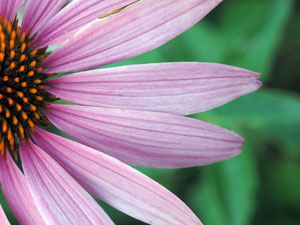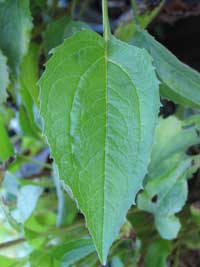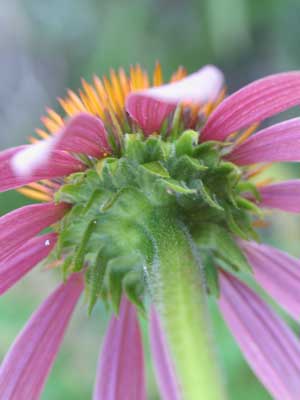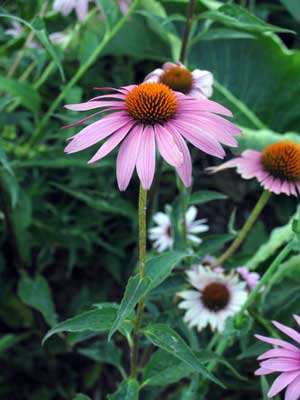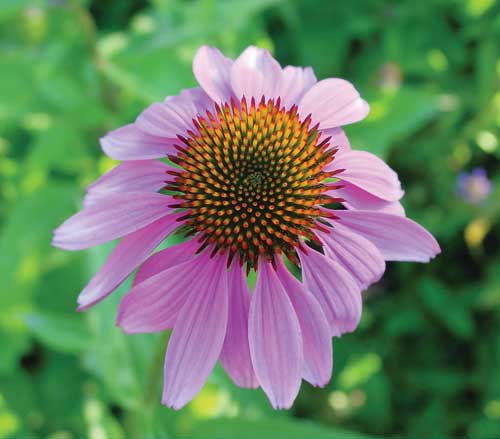|
by Richard Katz
Many flowers are in bud, or semi-open bud. Many others are fully open. The whole ambiance of the flowers is very vibrant, although at times partially obscured by neighboring plants. As flowers open, the central disk florets form a flat disk and the ray florets are on a plane or slightly above, creating a slightly concave (bowl-like) shape. Concavity is also manifest in the partially open rays, which curl upward, forming a trough-like shape.
As the flower develops, the ray florets reflex back and the central disk florets form a bulging mound, creating the striking convexity of the mature flower. Texture All parts of the Echinacea, with the exception of the ray florets, are characterized by toughness and rigid strength. The stem is fibrous and erect, sometimes with a small curve at the flower. It is ribbed and covered with very short hairs which give the stem a rough feeling, much like sandpaper. The leaves are also covered with these short sandpaper-like hairs. The most remarkable structure in the Echinacea is the mound of bracts surrounding the central disk florets, emerging from a nearly globular receptacle. These bracts are stiff, but not rigid. They bend to the touch, but do not lose their shape, and quickly return to their arrangement in the two interlocking Fibonacci spirals that characterize the central florets of composite flowers.
Structure / venation The ray florets are linear but ovate, with smooth edges coming to a dull point at the end. There are 8-12 parallel veins running the length of the florets, which thus resemble a monocotyledon leaf.
Color
Further observations, thoughts The qualities of the Echinacea have been well-established. Its strength and ordered structure are an expression of its ability to maintain the integrity of the self. What I saw further was how the movement from concavity to convexity in the opening of the flower and in the transition from the involucre to the flower head, is also a movement from receptivity to self-expression and outward expansion. The penetration of color into the stem and leaves, and the strong, vibrant coloration of the flower head, show the working of the astral forces of regeneration through the strong etheric matrix. I am still considering how the gentle simplicity of the ray florets is a contrast to the rough strength of the rest of the plant.
|

To install this Web App in your iPhone/iPad press ![]() and then Add to Home Screen.
and then Add to Home Screen.


 The concavity does not last long, as the ray florets flatten out, both in terms of their linear extension, and also the “through” cross-section which becomes flat, or even a bit convex.
The concavity does not last long, as the ray florets flatten out, both in terms of their linear extension, and also the “through” cross-section which becomes flat, or even a bit convex. 